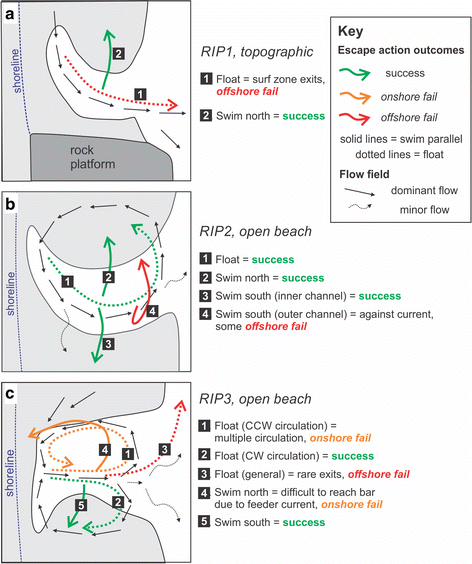There’s a lot of information out there about how to escape rip currents or spot them. There’s also a lot of people that ignore that information. In fact, only 45 % of beachgoers recall observing the signage that they would have walked past as they made their way onto the beach – the critical safety messages are missed by some 55 % of people!
Equally as important as the positioning of the signs is the content of the safety messaging itself. I’ve been working with Surf Life Saving NZ to help formulate their new beach safety campaign sponsored by TSB, specifically focused on rip current awareness. Our messaging is simple, if caught in a rip:
- RELAX and float
- RAISE your hand
- RIDE the rip

The first stage, RELAX, is pretty self explanatory. It’s all about fighting the misconceptions: the rip won’t pull you under the water, it won’t transport you to deep ocean. The most dangerous thing about a rip current is the panic that it induces in people – people panic, they become exhausted fighting against the current, and drown. So we advocate that people:
Stay calm, relax and float. The rip current will not pull you under the water and is just taking you for a ride offshore. Try to fight the urge to swim back to shore against the current; this will use up energy that you need to stay afloat before help arrives. Most people can float for a lot longer than they can swim!
The second stage, RAISE, is about attracting attention. Many people forget to signal for help in their panic response. Signal for help by putting your hand up to attract attention from lifeguards, surfers or someone on the beach who can get help.
It’s the final stage that really is a departure from historic advice. Ride the rip. Much of the response to that on social media has been that this will kill people, taking them far offshore – surely people should be swimming parallel to the beach? Well, no. New technology (GPS drifters) has enabled us to get a much better picture of how rip currents operate. Contrary to historic advice, we understand now that quite often, the rip current will circulate back to the shore. Whats the issue with swim parallel then? Rips don’t always flow perpendicular to the beach, they can flow at some quite extreme angles, which means selecting the wrong direction results in you fighting against the rip, expending all your energy, and drowning. The study below [link here] found that there really isn’t a correct escape strategy – sometimes swimming parallel just means you end up back in the rip feeder current, and sometimes floating means you end up offshore. So what becomes key here? The key message is conserve your energy until you can understand the rip current you’re in. If you ride the rip, you’ll end up outside of its sphere of influence, and this wont be miles offshore. At that point, having not fought the current, you have the energy and composure to get back to shore safely – look for the breaking waves and ride them in.
